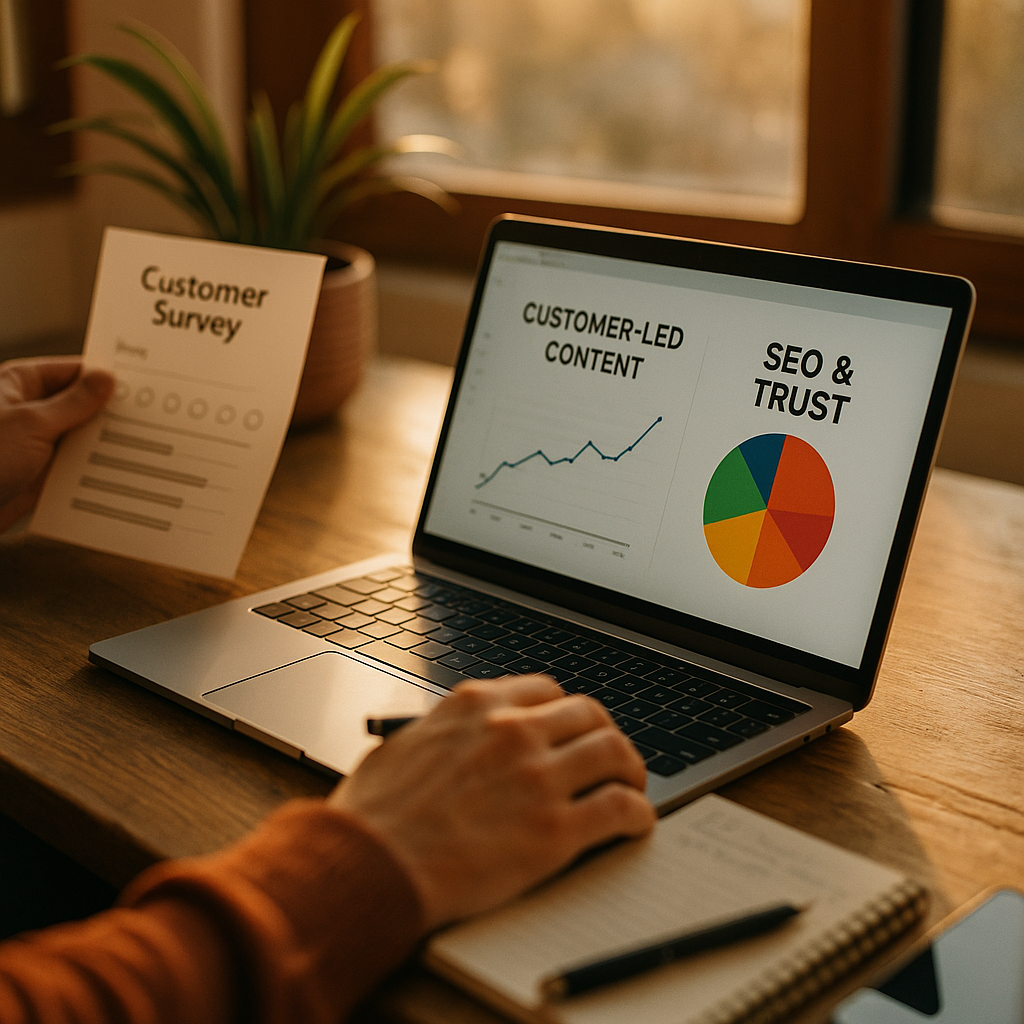Developing a customer-led content strategy that answers their biggest questions is the linchpin to driving engagement and trust in 2025. By prioritizing your audience’s real needs, you not only boost SEO but forge authentic relationships. In today’s crowded digital landscape, how do you pinpoint what truly matters to your customers? Discover the proven steps that deliver lasting results.
Understanding Your Audience: The Foundation of Content Relevance
To create a customer-led content strategy, begin with a deep understanding of your target audience. User intent and behavior should drive every content creation decision. Recent studies reveal that 71% of consumers expect personalized experiences tailored to their unique needs.
- Gather insights using analytics tools, customer interviews, and social listening.
- Map the customer journey to highlight key touchpoints where questions naturally arise.
- Build detailed buyer personas, focusing on pain points, goals, and preferred channels.
Investing in audience understanding ensures each content piece resonates and addresses real challenges, not assumptions. This level of accuracy strengthens your position as a trusted resource.
Keyword Research for Customer Questions: Capturing Search Intent
Effective keyword research isn’t just about traffic—it’s about uncovering the exact questions customers type into search engines. Google’s 2025 algorithm updates increasingly reward content that directly answers specific user queries.
- Leverage tools like Google’s People Also Ask, Answer The Public, and forums relevant to your niche.
- Analyze your site’s search data to identify recurring customer questions and content gaps.
- Focus on long-tail keywords that reflect real conversational language, enhancing the chances of capturing users at different sales funnel stages.
- Organize findings into clusters by topic and user journey stage.
This proactive approach puts your content in front of audiences right when they need answers, improving engagement metrics and organic reach.
Content Formats that Build Expertise and Trust
Diversifying content formats helps answer a wider range of customer questions while showcasing your expertise—a cornerstone of Google’s EEAT guidelines. In 2025, cross-format strategies outperform single-format content due to varied customer preferences.
- Comprehensive guides address foundational questions in depth.
- Case studies and testimonials provide real-world answers and proof, boosting credibility.
- Video explainers and webinars cater to visual and auditory learners, and can clarify complex topics efficiently.
- Interactive tools and calculators give personalized answers and actionable solutions.
- FAQs and quick reference articles resolve immediate, frequent questions.
Choose formats based on customer feedback and engagement patterns. Effective content isn’t just informative; it’s accessible and actionable.
Utilizing Customer Feedback to Identify Content Gaps
Your existing customers are your most valuable source of insights for content planning. By systematically collecting and analyzing their feedback, you can spot information gaps and topics your competitors may overlook.
- Monitor reviews, support tickets, and chat transcripts for repeat questions.
- Run surveys asking what information would improve their experience or purchasing decisions.
- Engage directly through user communities, forums, and social media polls.
This iterative process allows you to address unmet needs faster, reinforcing your reputation as an authoritative, listener-first brand.
Optimizing and Measuring the Impact of Your Strategy
Building a customer-led content strategy requires ongoing optimization. Establish clear KPIs to measure performance—such as organic search growth, engagement rates, and conversions tied to content touchpoints.
- Use analytics dashboards to track what content drives the most interaction and time on site.
- Solicit user feedback on content usefulness and clarity through embedded polls or email follow-ups.
- Regularly update high-value content to keep answers current and accurate. In 2025, freshness is essential for retaining search rankings on competitive topics.
Refine your strategy continuously, building on what works and quickly pivoting away from underperforming approaches. This agility keeps your brand at the forefront of customer trust and search visibility.
Aligning Content with Business Goals for Maximum Impact
A customer-led content strategy succeeds when it both satisfies user intent and serves your core business objectives. Align content topics with your most valuable products, services, or initiatives, ensuring every piece moves the needle.
- Develop content pathways that guide users from helpful answers to relevant solutions you offer.
- Collaborate between marketing, sales, and support to surface strategic insights and align on messaging.
- Leverage success stories and data in your content that demonstrate tangible value, encouraging conversions.
Every page should connect a customer question to a meaningful action—whether that’s making a purchase, requesting a demo, or subscribing for more resources.
FAQs: Customer-Led Content Strategy
-
What is a customer-led content strategy?
A customer-led content strategy focuses on creating content directly informed by customer needs, questions, and feedback—ensuring higher relevance, engagement, and trust.
-
How do I find out what my customers want to know?
Use surveys, analytics, social listening, and direct customer feedback channels (like support tickets) to identify common questions and pain points.
-
Why is answering customer questions important for SEO in 2025?
Google’s latest updates prioritize content that delivers clear, direct answers to user intent, rewarding brands that authentically solve real user problems with higher rankings.
-
What types of content work best for a customer-led approach?
Comprehensive guides, case studies, videos, interactive tools, and FAQs are especially effective for addressing diverse customer questions.
-
How often should I update my content?
Review and refresh high-value pages quarterly, or whenever new customer insights or industry changes arise, to maintain accuracy and search relevance.
In summary, a customer-led content strategy that answers your audience’s biggest questions is the key to meaningful engagement and improved SEO in 2025. Start by listening, optimize relentlessly, and always tie content back to real customer needs for sustainable growth.
